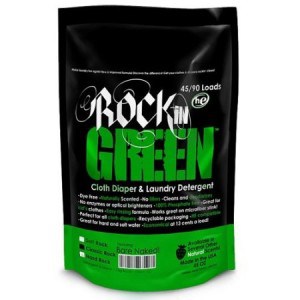
If you’ve made the decision to use cloth diapers you may be wondering where exactly to be begin. Here’s a run down of a few things you’ll need to know to jump right in and get started.
Building a Stash
Determine what your main objective is for cloth diapering and go from there. There are MANY different styles and brands to choose from and the price per diaper varies for each. Diapers are also made using anything from organic cotton to velour. Consider visiting a local cloth diaper store and see a few diapers in person or borrow a few from another mom. In the meantime, here are a few of the options available when it comes to styles of cloth diapers.
Cloth Diaper Terms:
Covers: A waterproof shell that is used with an insert or prefold.
Prefold diaper: A large rectangular piece of absorbent material such as cotton that can be folded and placed into a diaper cover. Prefolds can also be secured onto baby before being covered.
Fitted Diaper: A cloth diaper that usually has an absorbent pad built in or is absorbent on its own, but does not include a waterproof cover. It is attached with snaps, Velcro, or nothing at all.
All In One or “AIO” diaper: This type of diaper includes an absorbent fabric layer sewn into a waterproof cover.
Hybrid diapers: These diapers combine a reusable cover with a disposable insert.
Insert: Many diapers require a separate component to absorb urine and waste. Inserts are pads that fit into the diaper to do just that.
Velcro & Snaps: Diapers are most frequently made with Velcro or snap-securing side flaps. They are the reason why diapers can be adjusted as needed. Velcro is also referred to as ‘hook and loop’ or ‘aplix.’
Snappi™ or Boingos™ fasteners: Are used to clench each side of a prefold to keep it secured. These are the more updated and safer version of a diaper pins.
Additional Supplies Needed:
In addition to diapers you will also need a few accessories to get started. Here is a list of accessories and their purpose.
Wet Bags: These bags are used to contain soiled diapers. They are made with a waterproof barrier to prevent any leaks and can be washed in a washing machine just like cloth diapers.
A large bucket or trashcan: Dirty diapers will need to be stored somewhere until they are washed. A hanging wet bag can be used for this purpose as well either alone or as a liner for a trashcan.
Diaper sprayer: A handheld water sprayer that connects to a toilet to spray messes out of diapers. Some parents get by without a sprayer by shaking off any loose poop and dunking their diapers directly into their toilets.
Cloth diaper-safe detergent: Cloth diapers should be washed with diaper-safe detergents. There are several brands of detergents on the market sold specifically for cloth diapers. However, some general detergents can be safely used as well and can save you money compared to the specialized detergents. Check out this extensive list published by The Diaper Jungle to see what is safe to use with cloth diapers and what is not. Many brands of diapers will make their own recommendations as well.
Diaper-friendly creams: Cloth diapers are easily susceptible to build up from detergents and oil-based creams. When this occurs diapers can emit odors and repel urine resulting in leaks. If a diaper rash occurs it’s important to use diaper-friendly creams such as CJ’s BUTTer® or Gro-Via Magic Diaper Stick. For an economical option, consider using coconut oil or a homemade coconut oil based bottom balm.
When it comes to brands of cloth diapers there are the higher end diapers that cost a little more, and diapers that are much cheaper but get the job done. You will find that there are diapers that are made from organic materials, and there are diapers that are made from synthetics. There are people who will tell you not to purchase diapers that are cheap and ship directly from Chinese manufacturers and then there are other mom’s who have sworn by those diapers through multiple children. Depending on whom you talk to, there may be diapers that are better than others but in the end it comes down to your own requirements and what works best for you and your baby.
Popular Cloth Diaper Brands:
*Nikki’s Diapers has a full section of Made in the USA brands to choose from. You can check them out here.
Recommended Styles
Covers and prefolds are the most economical choice for cloth diapering. They can be folded in a variety of ways to help retain leaks and messes under a diaper cover. Covers can be purchased through online retailer Sweet Bottoms Baby Boutique for as low as $7.99. Combine this with a 6-pack of prefolds on Amazon for $11.99 and you’ve got 6 total diaper changes. Aside from the price, the other cost-savings factor is that most covers can be wiped clean between changes and used again before needing to be laundered. Here are more tips for how to save money using cloth diapers.
If you’re interested in diapering in as few steps as possible you may be more interested in pockets or all in one diapers. All in one diapers don’t require any stuffing of inserts, as they are already built in. With this diaper you simply secure it on your baby with snaps or Velcro and that’s it. Pockets are a great option because they work in the same way, but with the pocket you have the ability to stuff with additional inserts for heavy wetting children. You can choose what is being used for absorption and can buy heavy duty inserts if the need arises. The pocket also helps the inserts stay put.
 Cloth Diaper Tips:
Cloth Diaper Tips:
To ensure that your diapers will last, follow washing instructions provided by the manufacturers. Many diapers will come with a warranty but they will not apply if the diapers are ruined due to being washed or dried on too high heat or using additional solvents.
Establishing a good wash routine is important in taking care of your cloth diapers. Not enough detergent, too much detergent, or even the wrong type of detergent can all lead to problems with how well the diapers function. Washing every other day is recommended to prevent dirty diapers from sitting too long and having odors and stains set in. A typical wash routine consists of a pre-rinse, a hot wash with detergent, followed by an additional rinse. Most brands recommend drying on low heat in the dryer or hanging the diapers to air dry. Laying wet inserts in the sun is a great way to get stains out.
The type of water you have may make it more difficult to get your diapers thoroughly clean and free of build up from detergents. If you are unsure you can check which type of water you have my calling your local water department. You can also visit Morton Salt online to fill out a form and have a water test strip mailed to you.
Don’t worry, if you’re still unsure where to get started there are numerous other resources available for cloth diapering families. Make use of local support from cloth diaper stores and mommy groups in your area. Check out social media sites for groups you can join that discuss all things cloth diaper related. Most importantly, don’ fret if you make a mistake early on. Just like anything else involved in raising children, sometimes you just need to learn as you go and realize what works and what doesn’t. Remember the reasons you have chosen to cloth diaper in the first place and keep at it!
Emily is a mother of two, Army wife, avid cook, and recently discovered running to help stay fit. She enjoys the outdoors and sharing her knowledge about greener living with others, including cloth diapering and up-cycling everyday objects into something fresh.



Marie Czarnecki says
My oldest is 53 years old and when I had my babies, I purchased flannel and cut them and hemmed them and that was my diaper. I had four children and they got used much. Washed them and mad sure they were sterile for the next time. Before washing I soaked them in a light bleach H2O… Never had a problem.. That is my statement..